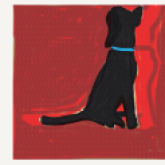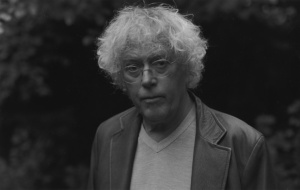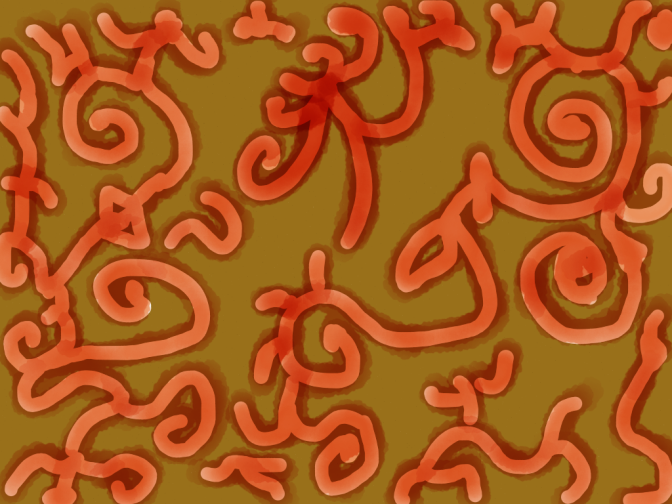
“Fish” by jpbohannon, 2017
One of Seamus Heaney’s later collections of poetry was entitled Seeing Things, and indeed the Irish poet was a master of detailed observation. His career was built on seeing and noticing things.

Andrew Barker, in his on-line lecture on Heaney’s early poem “Digging,” comments on the phrase “seeing things,” saying that we usually mean one of two things when we say it.
The first is what he is emphasizing in Heaney’s poems, the art of closely observing detail: in the case of “Digging,” the sound of a spade sliding through gravel, the squelch of the turf being sliced from the bog, the coolness of potatoes fresh from the ground.
But, Barker points out, there is also another meaning of someone “seeing things”– where it does not refer to someone with keenness of perception, but to someone who sees things that are not there. “He’s seeing things” quite often means that someone is seeing things that are not visible to others, someone who is delusional or fantasizing.
And then Barker names the poet William Butler Yeats as one who sees things that are not there.
I’ve let that percolate in my mind for a while. And then I thought of Yeats’ poem, “The Song of Wandering Aengus,” perhaps my favorite poem of all and one that I can recite at will.
The poem goes like this:
The Song of Wandering Aengus
I went out to the hazel wood,
Because a fire was in my head,
And cut and peeled a hazel wand,
And hooked a berry to a thread.
And when white moths were on the wing,
And moth-like stars were flickering out,
I dropped the berry in a stream
And caught a little silver trout.
When I had laid it on the floor
I went to blow the fire a-flame,
But something rustled on the floor,
And someone called me by my name.
It had become a glimmering girl
With apple blossom in her hair
Who called me by my name and ran
And faded through the brightening air.
Though I am old with wandering
Through hollow lands and hilly lands,
I will find out where she has gone
And kiss her lips and take her hands;
And walk among long dappled grass,
And pluck till time and times are done,
The silver apples of the moon,
The golden apples of the sun.
Apart from the subtle rhymes (“wand” and “wood” or “moon” and “sun”) or the beautiful images of “moth like stars” and “a glimmering girl/with apple blossom in her hair,” the poem is notable because Yeats is seeing things that are not necessarily visible.
(Do I need to mention that a silver trout transforms into a human female as the speaker turns to “blow the fire a-flame.”)
And yet there is a larger truth sitting on that cottage floor and running out the door. A larger truth that has the speaker spending his lifetime chasing that vision–and believing that he will catch it.
I used the word “vision” purposefully, for it is in that unseen vision that Yeats reveals a truth, a truth about passion, aspiration, dreams and goals. It is the dream of what one wants and the dedication of following that dream, of chasing that dream “till time and times are done.” For it is in chasing the dream–not in catching it– that a full life resides.
Yeats saw that truth…and saw it in a way not visible to most. (Never mind, that Yeats actually spent much of his life chasing after his “glimmering girl,” Maude Gonne. That’s beside the point!)
Certainly, we are all not going to fully realize our dreams; we will not all achieve what we set out to do. And often times not attaining what we thought we wanted may be the best thing to happens to us. But the chase must continue –and it defines our lives. If we are not looking forward–through “hollow lands and hilly lands”–if we have given up on that “glimmering girl,” then we are merely alive.
As I have said, this is one of my favorite poems–and it has often been put to music. If you search YouTube for “The Song of Wandering Aengus,” you will find scores of versions done by everyone from Christy Moore or The Waterboys to Dave Van Ronk and Judy Collins. Donovan did a version, as did Don MacLean on banjo.
Anyway, below is my favorite version, by Christy Moore. Give it a listen…






















 Whiskey cracking on ice
Whiskey cracking on ice